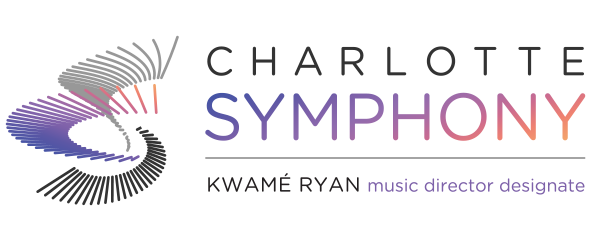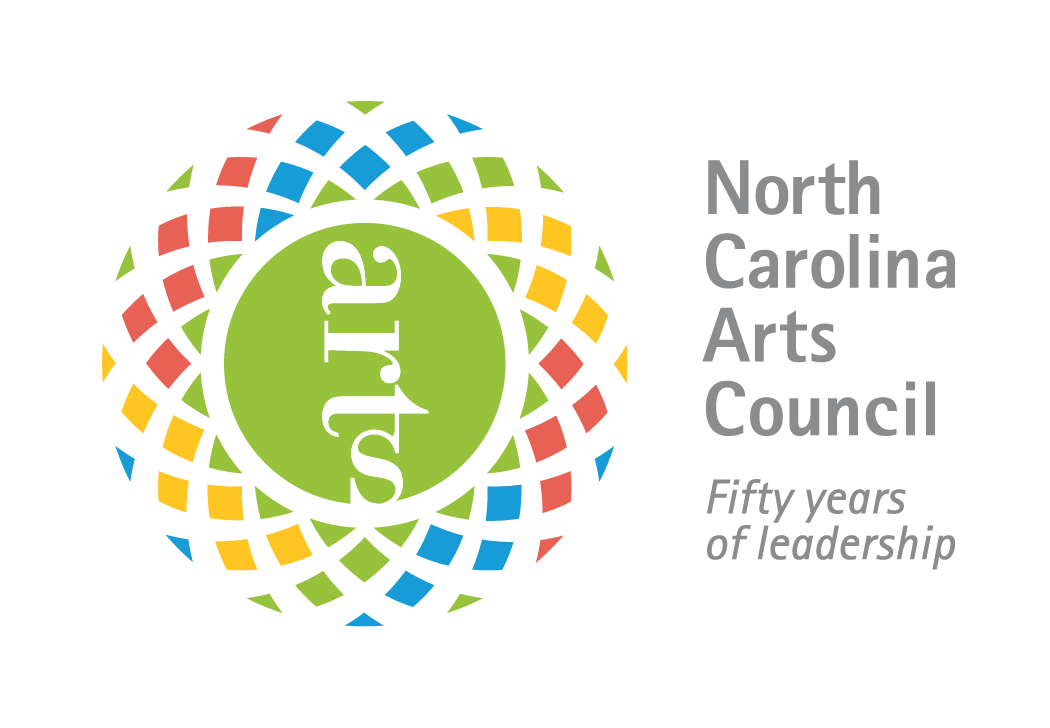Sound of Charlotte Blog
Garrick Ohlsson returns to Charlotte
September 29, 2018
Pianist Garrick Ohlsson has established himself worldwide as a musician of magisterial interpretive and technical prowess. Although long regarded as one of the world's leading exponents of the music of Chopin, Mr. Ohlsson commands an enormous repertoire ranging over the entire piano literature and he has come to be noted for his masterly performances of the works of Mozart, Beethoven and Schubert, as well as the Romantic repertoire.
A native of White Plains, N.Y., Garrick Ohlsson began his piano studies at the age of 8, at the Westchester Conservatory of Music; at 13 he entered The Juilliard School, in New York City. He has been awarded first prizes in the Busoni and Montreal Piano competitions, the Gold Medal at the International Chopin Competition in Warsaw (1970), the Avery Fisher Prize (1994), the University Musical Society Distinguished Artist Award in Ann Arbor, MI (1998), and the Jean Gimbel Lane Prize in Piano Performance from the Northwestern University Bienen School of Music (2014). Read more
Get to know Broadway sensation Michael Cavanaugh
September 21, 2018Grammy- and Tony- nominated artist Michael Cavanaugh joins us on September 28 & 29 to kick off our Pops series with The Music of Elton John and More. Get to know the Piano Man behind the music below.
| 1. At age 7, Michael's parents bought their first piano and he began to play. Encouraged by family and friends, he formed his first band at age 10. 2. In 2001 at a performance in Las Vegas, Billy Joel discovered Michael's vast talents and joined him on stage. Afterward, he invited Michael to join him in creating the Broadway musical Movin' Out. 3. Michael was nominated for Tony and Grammy Awards for his work on Movin' Out. |
 |
4. After Movin' Out closed in 2005, Michael began touring and quickly became one of the hottest artists in the private events market. He continues to perform worldwide for company and charity events, and at sporting events like the Super Bowl and the Indy 500.
5. In 2008, Michael debuted his first performance with symphony orchestras, The Songs of Billy Joel and More. He soon followed that up with the debut of The Music of Elton John and More in 2010. Read more
How a Violinist is like a Pro Athlete
September 4, 2018If you've ever seen Joshua Bell perform live, you'll understand just how much stamina and sheer power goes into every performance. Here, we pick Joshua Bell's brain on the athleticism behind his performances.
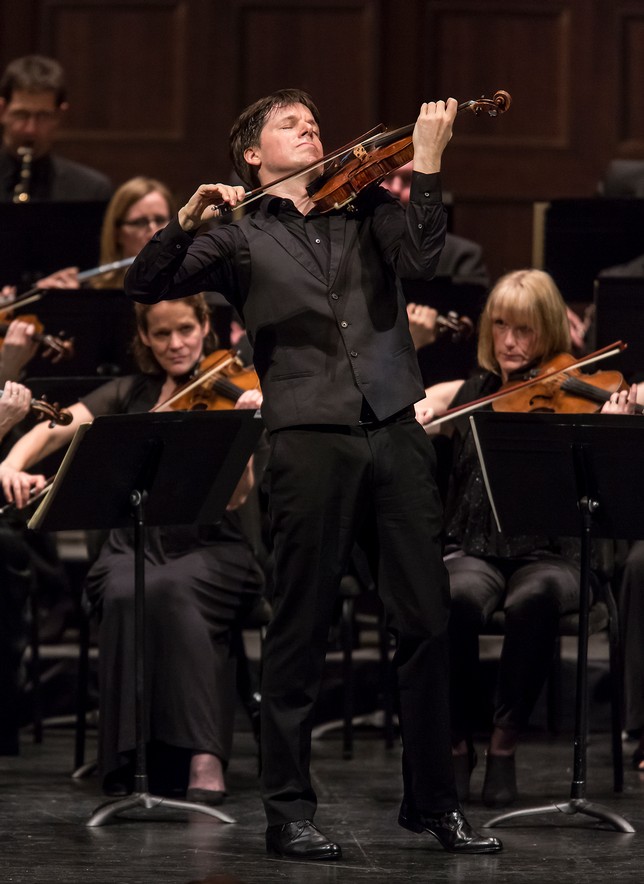 |
First of all, we've heard that you lose weight every time you perform? Yes! I'm quite physical when I play, so it's quite good exercise. I probably lose at least a couple of pounds after a two-hour performance. It almost makes up for the fact that I tend to celebrate afterwards with a huge meal! Almost. That sounds like a good workout plan. Do you exercise off-stage, too? Well, not as much as I used to, but I still love to play tennis and basketball, and I always seem to be running through airports to catch my plane! |
You also have children you must run after quite a bit?
Yes, three. Three young boys, 8-year-old twins, and an 11 year-old. I'm trying to teach them tennis, so hopefully they will help me stay in shape.
We also hear you're a foodie.
Yes! I love food. It's one of the great joys of traveling. I love tasting foods from different regions of the world. Recent highlights were eating at Noma in Copenhagen, The French Laundry in Napa, Au Cheval in Chicago wow, what a burger! I also just got back from Asia, including Thailand, which has some of my favorite food in the world.
So what's the greatest parallel between an athlete in competition and a violinist on stage?
There are so many similarities. To excel in either, it always helps to have started young, and both require excessive training. Whether it's playing basketball or playing the violin, one must have extreme focus, and must have confidence which comes from great preparation and also from learning how to conquer ones fears and doubts under pressure - always trying to get "in the zone."
Also, as a soloist with an orchestra, you're part of a "team" effort in the presenting of music.
Absolutely. As with sports, making music is almost always a team effort. One must react to others, and know how and when to lead and when to follow. An orchestra is a lot like a football team, all with separate tasks but working toward a common goal, and the soloists job, I suppose, is to be part quarterback and part coach! (OK, maybe I've taken the analogy too far!)...It is no coincidence that I happen to love football season, and I always try my best to keep my Sundays free to watch as many games as possible! Go Panthers! Read more
6 Things about Joshua Bell
August 23, 2018
He was a child prodigy.Joshua Bell was born in Bloomington, Indiana, on December 9, 1967 and began taking violin at age 4. His parents had noticed that he had stretched rubber bands across the handles of his dresser drawer to try to replay music he had heard her play on the piano. |
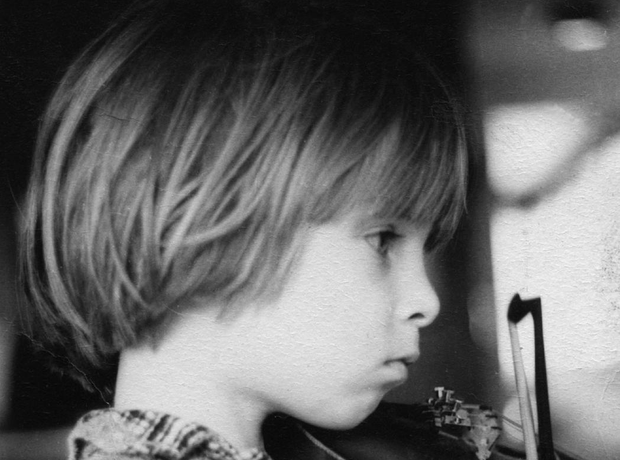 |
A teenage symphonic debut.
By 14 Bell had appeared as a soloist with the Philadelphia Orchestra, conducted by Riccardo Muti. He studied violin at the Indiana University Jacobs School of Music and went on to receive an Artist Diploma in Violin Performance from Indiana University in 1989. By 17 he had debuted at Carnegie Hall debut with the St. Louis Symphony Orchestra.
A champion of new works.Like the Charlotte Symphony, Bell is a fan of promoting new works. Having premiered Nicholas Maw's violin concerto, which is dedicated to Bell, in 1993, he won a Grammy Award for his recording. He will kick off our 2018-19 season at Opening Night, where he'll perform the Brahms Violin Concerto and we'll debut a commissioned work by Nkeiru Okoye in celebration of Charlotte at 250. |
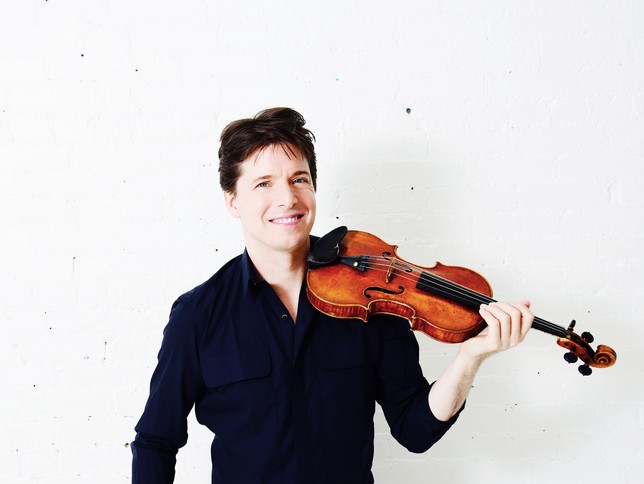 |
Fate and a 300-year old Stradivarius.
Bell's instrument is a storied 300-year old Stradivarius violin, the "Gibson ex Huberman," made in 1713. The instrument survived war, theft, and much more, and we'll hear it live on September 21. Read the story in Bell's own words, here.Oscars, etc.
Bell performed the violin solos for the Oscar-winning soundtrack for 'The Red Violin' and was also featured in film scores including 'Ladies in Lavender', 'Iris' and 'Defiance'.
A man of other talents.
On May 26, 2011, Bell was named Music Director of the British music ensemble, the Academy of St. Martin in the Fields. Selected by the orchestra members, he is the only other person to hold this position following the great Sir Neville Marriner, who founded the orchestra in 1958. Read more"An Instrument Meant to Be Played": Joshua Bell on His Stradivarius Violin
July 25, 2018The Huberman Violin
by Joshua Bell, on his historic instrument's 300th birthday.My violin is over 300 years old.
Known as the Gibson ex Huberman, the revered instrument came into my life one fateful day during the summer of 2001. I was in London, getting ready to play a Proms concert at the Royal Albert Hall and decided to stop by the famous violin shop, J & A Beare to pick up some strings. As I entered the shop, Charles Beare was just coming out of the back room with a stunning violin in hand. He told me that it was the famous Huberman Strad, and of course I was instantly intrigued.

I soon learned all of the known details of the violin's remarkable history, which is complete with twists and turns to rival the film that I had only recently finished working on, The Red Violin. Believed to be one of only five or six instruments made in 1713 by Antonio Stradivari in Cremona, Italy, the violin has belonged to many, including the English violinist George Alfred Gibson. But it was its connection to Bronislaw Huberman that I found particularly fascinating and somewhat personal.
Huberman was a Jewish Polish violinist who lived from 1882-1947. He was a child prodigy who was revered for his remarkable virtuosity and daring interpretations. Huberman studied under Joseph Joachim in Berlin, and by the age of 11 he was already touring Europe as a virtuoso. It was during one of those early tours that he met the pianist Arthur Rubinstein, who was only six at the time, and had not yet achieved the legendary status that he came to hold. The two musicians remained lifelong friends.
At 13 Huberman had the honor of performing the violin concerto of Johannes Brahms in the presence of the composer himself, who was stunned by his interpretation. According to biographer Max Kalbeck, "As soon as Brahms heard the sound of the violin, he pricked up his ears, during the Andante he wiped his eyes, and after the Finale he went into the green room, embraced the young fellow, and stroked his cheeks. When Huberman complained that the public applauded after the cadenza, breaking into the lovely Cantilena, Brahms replied, 'You should not have played the cadenza so beautifully.' "
Huberman became one of the most celebrated musicians of his time, but it was in 1929 that his contribution to humanity took on an added dimension. During that year he visited Palestine and came up with the idea to establish a classical music presence there. During Hitler's rise to power, Huberman had the foresight to realize he could save many Jewish artists while fulfilling his desire to start a Palestinian Orchestra. Huberman auditioned musicians from all over Europe. Those selected for the orchestra would receive contracts and, most importantly, otherwise impossible-to-get exit visas from their homeland to Palestine. Huberman raised the money for the musicians and then their families, even partnering with Albert Einstein to set up an exhaustive U.S. fundraising trip in 1936. By the end of that tour, the money for the orchestra was secured and sixty top-rate players had been chosen from Germany and Central Europe.
All in all, it was a fantastically successful tour, barring one particular performance at Carnegie Hall on February 28th. That night Huberman chose to play the second half of his concert on his 'other violin', a Guarneri del Gesu. During the applause following his performance of the Franck Sonata, Huberman's valet walked on stage to inform him that his Stradivarius had been stolen from his dressing room. The police were called while Huberman tried not to panic, continuing optimistically with his encores. The instrument had previously been stolen in 1919 from a hotel room in Vienna but was recovered days later when the thief tried to sell it. This time, Huberman was not so lucky.
There are several versions as to exactly how and why the violin was stolen, but what we know for sure is that the instrument ended up in the hands of a young freelance violinist by the name of Julian Altman. Some say Altman's mother convinced him to steal it; others report that Altman bought if off the actual thief for $100. Regardless, Altman took great pains to conceal the violin's true identity, covering its lovely varnish with shoe polish and performing on it throughout the rest of his career, which included a stint as first chair with the National Symphony Orchestra during World War II.
Heartbroken, Huberman never saw his Stradivarius again. However, his great dream was fulfilled when the new Palestine Orchestra made its debut in December of 1936 with the great Toscanini on the podium. I like to imagine that my own relatives might have been in the audience on that opening night, as my grandfather was born there and my great grandfather was part of the first "Aliyah" of Russian Jewish immigrants to Palestine in 1882. As for his violin, it was played by its suspected thief for over fifty years, and in 1985, Julian Altman made a deathbed confession to his wife, Marcelle Hall, about the true identity of the instrument. She eventually returned the violin to Lloyd's of London and received a finder's fee; and the instrument underwent a nine month restoration by J & A Beare Ltd which noted it was like "taking dirt off the ceiling of the Sistine Chapel."
The instrument was then sold to the late British violinist Norbert Brainin of the Amadeus String Quartet. Previous to my fortuitous encounter with the violin at J & A Beare, Brainin had once let me play it after a rehearsal of the Mozart g minor string quintet which I had the pleasure of playing with him one evening in the 1990s. "One day you might be lucky enough to have such a violin," he had said prophetically.
And so here I was in 2001, buying some strings at the violin shop and I was introduced to the 1713 Stradivarius again. As it was handed to me, I was told it was being sold to a wealthy German industrialist for his private collection. However, after playing only a few notes on it I vowed that this would not happen. This was an instrument meant to be played, not just admired. I fell in love with the instrument right away, and even performed that very night on it at the Royal Albert Hall. I simply did not want it to leave my hands.
This violin is special in so many ways. It is overwhelming to think of how many amazing people have held it and heard it. When I perform in Israel with the Israel Philharmonic, I am always touched to think how many of the orchestra and audience members are direct descendants of the musicians Huberman saved from the Holocaust with funds raised by concerts performed on the very same instrument I play every day. Who knows what other adventures will come to my precious violin in the years to come? While it certainly will be enjoyed and admired long after I am not around anymore, for the time being I count myself incredibly lucky to be its caretaker on its 300th birthday. Read more
Spotlight On: Soprano Lindsay Kesselman
April 11, 2018On April 20, 2018, your Charlotte Symphony presented the altsounds series finale: Rockin' with Dylan. The centerpiece of the program is a work by contemporary composer John Corigliano, inspired by Dylan's poems, featuring new music soprano Lindsay Kesselman. Read more about Kesselman below.
| Hailed by Fanfare Magazine as an "artist of growing reputation for her artistry and intelligence...with a voice of goddess-like splendor," Lindsay Kesselman is a soprano who passionately advocates for contemporary music. This season Kesselman has the honor of being the featured singer at John Corigliano's 80th birthday concert celebration at National Sawdust in NYC. Other season highlights include her debuts with the North Carolina Symphony and the Charlotte Symphony Orchestra, as well as the 2017 release of Antique Violences on Blue Griffin, featuring Songs from the End of the World by John Mackey, written for Kesselman and chamber winds. |
 |
During the 2015-16 season, Kesselman made her debut with both the Los Angeles Philharmonic and Dutch National Opera in a leading role of a new opera by composer Louis Andriessen entitled Theatre of the World. A live audio recording was released on Nonesuch Records in September 2017.
From 2012-15, she sang with the Philip Glass Ensemble on an international tour of Philip Glass' opera Einstein on the Beach. Kesselman is also the resident soprano with the Pittsburgh New Music Ensemble. Other recent and upcoming performances include her debut at Carnegie Hall singing Corigliano's Mr. Tambourine Man, premieres of new works for soprano and wind symphony by D.J. Sparr and Robert Beaser, and on Bright Angel and Atonement, recordings of American contemporary music released on the Fleur de Son Classics.
Kesselman holds degrees in voice performance from Rice University and Michigan State University. More information can be found at: www.lindsaykesselman.com Read more
Spotlight On: Violinist and Conductor Aisslinn Nosky
December 12, 2017| Hailed as "a fearsomely powerful musician" by The Toronto Star, Canadian-born violinist Aisslinn Nosky is one of the most versatile and dynamic violinists today. She is in demand internationally as a soloist and director and was appointed Concertmaster of the Handel and Haydn Society in 2011. She has performed in solo and chamber music recitals across North America, Europe and Asia. |  |
Recent appearances as soloist include La Jolla SummerFest, the Staunton Music Festival, the Thunder Bay Symphony, Holland Baroque, the Calgary Philharmonic, and Tafelmusik Baroque Orchestra. In 2016 Aisslinn was named Principal Guest Conductor of the Niagara Symphony.
As a founding member of the Eybler quartet, Nosky explores repertoire from early quartet literature on period instruments. The Eybler Quartet's recording of Haydn's Opus 33 string quartets was released in 2012 on the Analekta label. The Globe and Mail mused "Many a great string quartet annihilates Haydn with incorrect tempos, intense legato, and a general misunderstanding of classical syntax. Here we have them as the composer might have heard them himself. In fact, maybe even better."
As Co-Artistic Director of I FURIOSI Baroque Ensemble, Aisslinn has helped bring an enthusiastic new audience to baroque music. Since 2001, I FURIOSI has presented its own flamboyant and inventive concert series in Toronto, and they have toured North America and Europe.
Aisslinn began playing violin at age three and received her early training at the Nanaimo Conservatory with Heilwig von Konigslow. At age eight, Aisslinn made her solo debut with the CBC Vancouver Orchestra. When she was 15, Nosky began studying in Toronto with Lorand Fenyves, at the Royal Conservatory of Music's Glenn Gould School. Further studies included both solo and chamber music for several summers at the Banff Centre for the Arts, and chamber music at the Steans Music Institute of the Ravinia Festival as a member of the Metro String Quartet. Read more
Spotlight On: O'Connor Band
November 1, 2017The O'Connor Band's very first performance took place at the legendary Walnut Valley Festival in Winfield, Kansas in 2015. In 2017 less than a year and a half later they took home the GRAMMY Award for Best Bluegrass Album for their debut recording, Coming Home.
In a whirlwind 18 months, the band has also performed at the GRAMMY Awards Premiere Ceremony, received standing ovations at the Grand Ole Opry, reached the No. 1 spot on Billboard's Top Bluegrass Albums chart, and partnered with powerhouse booking agency William Morris Endeavor Entertainment (WME).
In a whirlwind 18 months, the band has also performed at the GRAMMY Awards Premiere Ceremony, received standing ovations at the Grand Ole Opry, reached the No. 1 spot on Billboard's Top Bluegrass Albums chart, and partnered with powerhouse booking agency William Morris Endeavor Entertainment (WME).
The O'Connor Band is the product of Mark O'Connor's imagination one that has served him well over the course of his four-decade professional career. A former child prodigy and national champion on the fiddle, guitar, and mandolin, Mark has won numerous GRAMMYs and CMA Awards, appeared on hundreds of commercial country albums, collaborated with the likes of Johnny Cash, Wynton Marsalis, Dolly Parton, and Yo-Yo Ma, and performed everything from original violin concertos to swing and jazz. But until recently, he had not worked on a project quite like this.
"It's been one of the most surprising and rewarding experiences to perform with my family members on stage," says Mark. "It's really exciting to bend these American genres in new ways, combining accessibility with a real depth of musicianship and writing."
In addition to Mark, the band features his son Forrest, (Harvard graduate and former Tennessee State Mandolin Champion), daughter-in-law Kate (frequent performer on the CMA Awards and CMA Country Christmas shows), and wife Maggie (graduate of the Peabody Institute of the Johns Hopkins University). The band is rounded out by Joe Smart (national flatpick champion on guitar) and Geoff Saunders (bassist/banjoist extraordinaire and recent graduate of the University of Miami's DMA program). All six band members possess charisma that, when combined onstage, ensnares audiences from start to finish.
All information comes from O'Connor Band's website. To learn more, visit www.oconnorband.com.
Spotlight On: Violinist Benjamin Beilman
October 30, 2017
Born in 1989, American violinist Benjamin Beilman is winning plaudits across the globe for his compelling and impassioned performances, his deep rich tone and searing lyricism and is quickly establishing himself as one of the most significant artists of his generation. The New York Times has praised his "handsome technique, burnished sound, and quiet confidence [which] showed why he has come so far so fast". Reviewing his latest recording, The Strad said "Beilman imbues every idea with a scorching expressive imperativeness... soaring aloft with ear-ringingly pure intonation... then lacerating our sensitivities with hectoring explosions of sound."
In Europe Beilman has performed with many of the major orchestras including the London Philharmonic, Frankfurt Radio Symphony and Zurich Tonhalle and in 16/17 made his debut with the Rotterdam Philharmonic, City of Birmingham Symphony orchestras and the Orchestre National de Capitole de Toulouse. In the US recent highlights have included a return San Francisco Symphony, and debuts with Dallas Symphony, Atlanta Symphony and Nashville Symphony orchestras.
Beilman performs regularly in recital and chamber music, appearing at halls such as Wigmore Hall, Stockholm Concert Hall, Louvre (Paris), Rudolfinum (Prague), Philharmonie (Berlin) and at festivals including Verbier, Aix-en-Provence Easter, Colmar, Moritzburg, Heidelberg and in 2017 he made his debut at Amsterdam's Concertgebouw in the Robeco Summer Concerts in trio with Louis Schwizgebel and Narek Hakhnazaryan. In the US Beilman performs regularly at Carnegie Hall and is a frequent guest artist at festivals such as Music@Menlo, Marlboro, Seattle Chamber Music; further afield he made a ten-city recital tour of Australia in 2016 with Andrew Tyson and looks forward to recitals in SE Asia in the coming seasons.
Beilman has received several prestigious awards including a Borletti-Buitoni Trust Fellowship, an Avery Fisher Career Grant and a London Music Masters Award. In 2010 he won the First Prize in the Young Concert Artists International Auditions, and as First Prize Winner of the 2010 Montréal International Musical Competition and winner of the People's Choice Award, Beilman recorded Prokofiev's complete sonatas for violin on the Analekta label in 2011. In 2016 he released his first disc for Warner Classics titled Spectrum, featuring works by Stravinsky, Janacek and Schubert.
Beilman studied with Almita and Roland Vamos at the Music Institute of Chicago, Ida Kavafian and Pamela Frank at the Curtis Institute of Music, and Christian Tetzlaff at the Kronberg Academy. He plays the "Engleman" Stradivarius from 1709 generously on loan from the Nippon Music Foundation. Read more
Spotlight On: Composer and Pannist Andy Akiho
October 19, 2017A steelpan, sometimes referred to as a steeldrum, is a concave, metal bowl-like instrument native to Trinidad and Tobago. Its sound is most often associated with warm, islandic regions like the Caribbean and eastern parts of South America. The instrument is unique in that its sound can be both melodic and percussive--one minute the notes are liquid, silvery, and flowing; the next, they are tinny, rasping beats.
Andy Akiho, who is of Trinidadian decent but grew up in Columbia, South Carolina, says it was the steelpan that led him to become a composer. Currently working on a PhD in composition at Princeton University, Akiho has found a way to unite the sunny sounds of the steelpan with contemporary classical repertory. Beneath Lighted Coffers, the piece he will perform with us on November 10, represents this union.
The five-movement work was inspired by the sophisticated architecture of the Roman Pantheon. From the portico, to the oculus, and even the marbled patterns of the floors, each movement provides a representation of different parts of the ancient temple.
The elaborate metaphor that is Beneath Lighted Coffers pushes the limits of intellectual design. In this work, Akiho presents a rare and interesting notion: he incorporates the architecture of a building into the very architecture of a composition. Numbers derived from the structural engineering of the Pantheon are echoed in the time signatures and percussion of the piece. Perhaps this is just one reason why Akiho is so well known for breaking the mold of contemporary classical music.

Learn more about Andy Akiho at www.andyakiho.com
Read more
| « Newer Posts | Older Posts » |
Latest Posts
- MERGE: Symphonic x Electronic
- Heart of the Home Tour Returns
- Composer Spotlight: Nia Imani Franklin
- More Famous Than Mozart: Joseph Bologne, Chevalier de Saint-Georges
- Art in Motion: Rosalia Torres-Weiner Chosen to Design CSO Roadshow
- Announcing Kwamé Ryan as the Charlotte Symphony’s Next Music Director
- Photos: Charlotte Symphony Annual Gala and Concert
- Five Must-See Concerts of the 2023-24 Season
- 5 Pro Tips for the Best Summer Pops Experience
- A Preschool Performance Three Years in the Making
